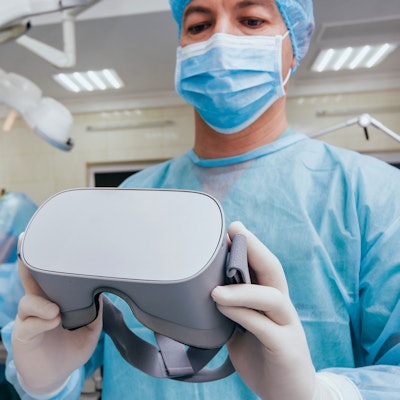
Want to reduce pain for your pediatric patients during painful or uncomfortable procedures? Try distracting them. In a study of pediatric patients, using virtual reality (VR) as a distraction reduced pain during rubber dam placement, according to a study published on August 6 in the International Dental Journal.
"An ideal distractor involves a number of senses and triggers emotional reactions that assure that the patient is focused on the distracting elements," wrote the study authors, led by Dr. Lior Zaidman of the Hebrew University of Jerusalem in Israel.
VR is an interactive computer-generated experience that uses a head-mounted display, creating an immersive experience with visual and sound effects. Because VR places the user in a virtual environment, it involves many popular methods of distraction, including music, storytelling, and audiovisual sensations.
Previous studies have shown that distraction using VR has proved to be effective in reducing pain in children undergoing other medical procedures. Researchers tested whether screening content through VR goggles can diminish pain perception during the administration of local anesthesia and rubber dam placement in routine pediatric dental treatment.
The study included 29 patients between the ages of 4 and 12 who were scheduled to receive local anesthesia using the inferior alveolar nerve block technique and rubber dam placement in two visits. By comparing patients' pain levels throughout the two visits, the effect of individual pain tolerance was negated.
Participants were randomly assigned to undergo one treatment with VR goggles and the other treatment without. Pain levels were evaluated using the Wong-Baker Faces Pain Rating Scale and the Modified Behavioral Pain Scale.
No significant difference was observed in pain between visits with and without the VR goggles. However, during placement of a rubber dam, significantly less pain was reported by the patients when the VR goggles were used.
Researchers suspect that this may be due to patients' expectations that they will experience pain when they are given local anesthesia. Because children expect to experience pain, the researchers anticipated that patients would rate their pain as high.
However, researchers speculated that patients did not have similar expectations regarding the placement of a rubber dam. Therefore, the changes in reported pain levels demonstrated a decrease in pain perception with VR compared to without.
"In conclusion, the use of VR goggles decreased the pain perceived during rubber dam placement amongst children but has limited benefit during administration of local anesthesia," Zaidman and colleagues concluded.



















